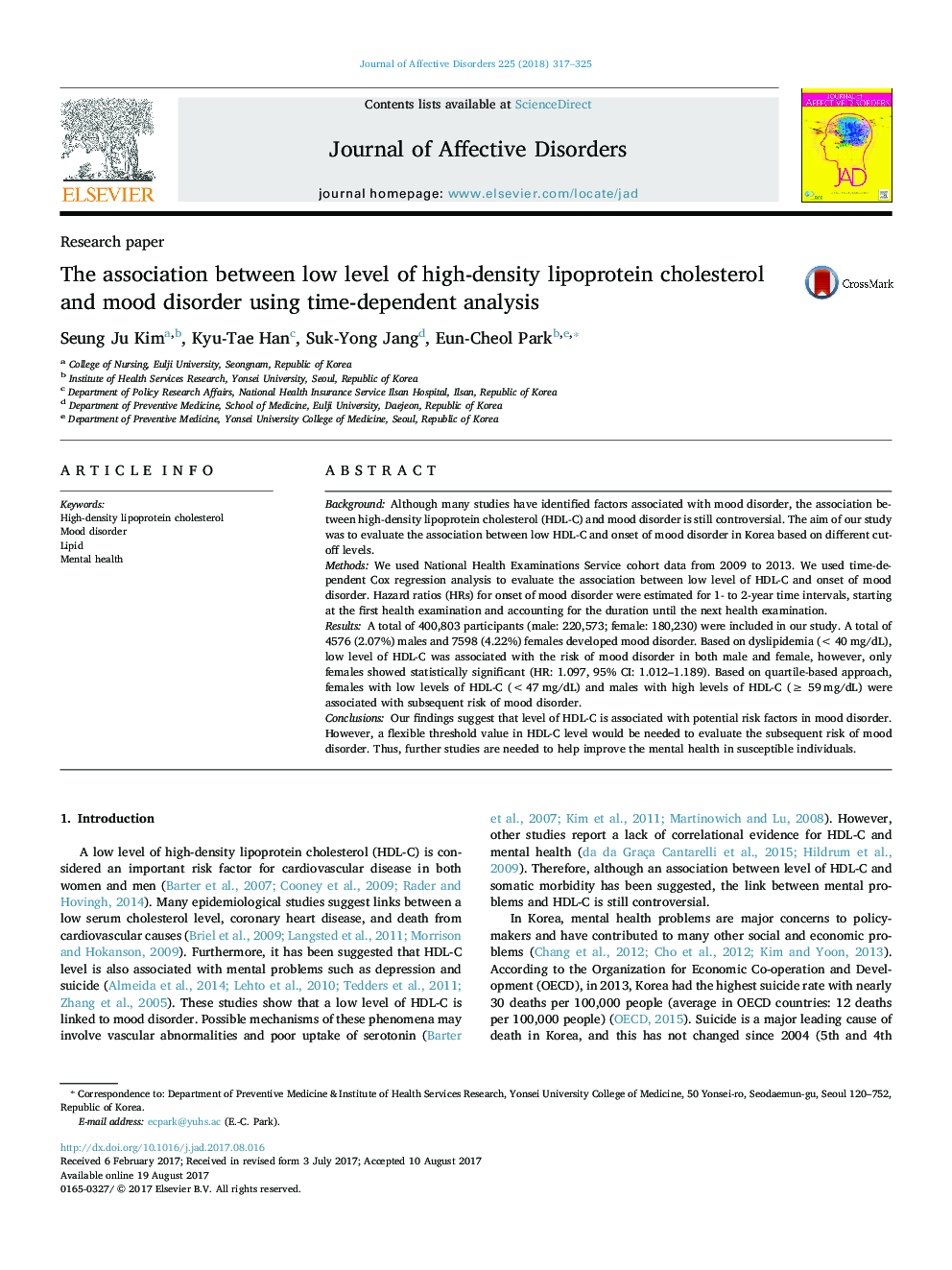| کد مقاله | کد نشریه | سال انتشار | مقاله انگلیسی | نسخه تمام متن |
|---|---|---|---|---|
| 5721728 | 1608100 | 2018 | 9 صفحه PDF | دانلود رایگان |
- Low level of HDL-C was associated with the risk of mood disorder in female.
- Males with high levels of HDL-C were associated with the risk of mood disorder.
- Flexible threshold value for HDL-C was needed to evaluate patients with mood disorder.
- HDL-C levels may help improve early detection of mood disorder in patients.
BackgroundAlthough many studies have identified factors associated with mood disorder, the association between high-density lipoprotein cholesterol (HDL-C) and mood disorder is still controversial. The aim of our study was to evaluate the association between low HDL-C and onset of mood disorder in Korea based on different cut-off levels.MethodsWe used National Health Examinations Service cohort data from 2009 to 2013. We used time-dependent Cox regression analysis to evaluate the association between low level of HDL-C and onset of mood disorder. Hazard ratios (HRs) for onset of mood disorder were estimated for 1- to 2-year time intervals, starting at the first health examination and accounting for the duration until the next health examination.ResultsA total of 400,803 participants (male: 220,573; female: 180,230) were included in our study. A total of 4576 (2.07%) males and 7598 (4.22%) females developed mood disorder. Based on dyslipidemia (< 40 mg/dL), low level of HDL-C was associated with the risk of mood disorder in both male and female, however, only females showed statistically significant (HR: 1.097, 95% CI: 1.012-1.189). Based on quartile-based approach, females with low levels of HDL-C (< 47 mg/dL) and males with high levels of HDL-C (⥠59 mg/dL) were associated with subsequent risk of mood disorder.ConclusionsOur findings suggest that level of HDL-C is associated with potential risk factors in mood disorder. However, a flexible threshold value in HDL-C level would be needed to evaluate the subsequent risk of mood disorder. Thus, further studies are needed to help improve the mental health in susceptible individuals.
Journal: Journal of Affective Disorders - Volume 225, 1 January 2018, Pages 317-325
